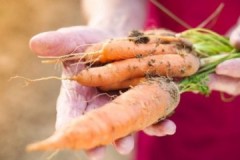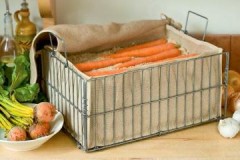An important point about the safety of the crop: is it necessary to wash carrots before storing them for the winter?
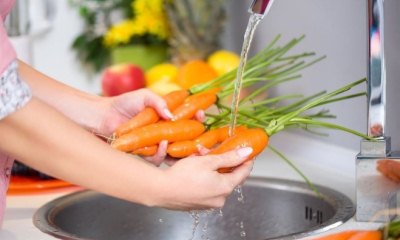 After harvesting from the garden, all vegetables and root crops need to be properly prepared for storage.
After harvesting from the garden, all vegetables and root crops need to be properly prepared for storage.
They are sorted, removing damaged and diseased specimens, dried, and cleaned of adhering soil.
Do I need to wash carrots before storing them for the winter? The pros and cons of this procedure are described in the article.
Content
Is the vegetable washed, what does washing affect?
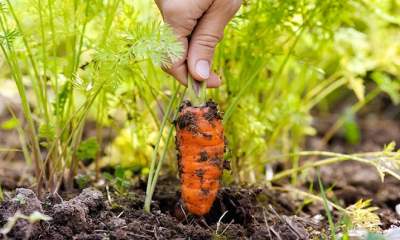 It is impossible to answer this question unequivocally. The advisability of washing root vegetables depends on several factors:
It is impossible to answer this question unequivocally. The advisability of washing root vegetables depends on several factors:
- degree of contamination of carrots;
- the volume of the harvested crop (if it amounts to hundreds of kilograms, washing the vegetable will entail additional costs);
- availability of space for drying the washed crop.
If the crop is harvested on warm, fine days, the carrots remain practically uncontaminated and do not need additional cleaning. It is enough to sort it out, dry it and send it for storage. Small particles of soil will fall off on their own.
If the autumn turns out to be rainy, then the root crops are removed from the soil contaminated. It is impossible to evaluate the quality of carrots if they are covered with clods of earth. It is easy to let diseased root vegetables go into storage, where they will become a source of infection for healthy vegetables.
Pathogens and pests can persist in the soil that sticks to the root crop. During storage, they become active and infect vegetables that come into contact with the ground.
Pros and cons of storing washed root vegetables
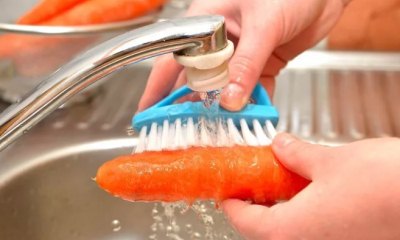 Obvious advantages of wet cleaning of root crops before storing them in storage:
Obvious advantages of wet cleaning of root crops before storing them in storage:
- traces of damage and disease are visible on the cleaned surface of vegetables;
- fungal spores and pests do not enter the storage facility along with the soil;
- clean carrots have an attractive presentation;
- It is easier to peel such a vegetable before eating.
Washed, dried carrots are stored longer and better than dirty ones. Residues of soil stuck to the root crop prevent the skin from “breathing,” causing its premature deterioration. A storage area with clean root vegetables maintains a healthy atmosphere and is easier to maintain the required humidity.
The main disadvantage of washing carrots before storage is that it is labor-intensive and time-consuming. To clean root vegetables you will need a lot of water and large containers for soaking.
Therefore, owners of small garden plots, who harvest several tens of kilograms, wash carrots by hand. On large farms where vegetable washing is automated, all root vegetables undergo a wet cleaning procedure.
After washing, it is important to dry the carrots well, but do not allow the vegetable to dry out. To do this, the root vegetables are placed on sieves and kept in air until the liquid has completely drained. Errors in the washing procedure will lead to a reduction in the shelf life of the root crop.
Should I clean it after harvesting or before storing it in the cellar?
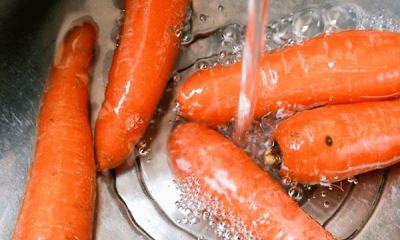 It is more advisable to clean root vegetables immediately after harvesting, while the soil adhering to the fruit is soft and damp.. Later, when the soil dries out and hardens, it will be more difficult to remove it from the vegetable.
It is more advisable to clean root vegetables immediately after harvesting, while the soil adhering to the fruit is soft and damp.. Later, when the soil dries out and hardens, it will be more difficult to remove it from the vegetable.
Simultaneously with washing, the harvested crop is sorted. Small, diseased, wireworm-infested specimens are discarded. Chopped root vegetables can be stored for a short period of time, or they can be processed.
If the carrots were purchased already dirty, they must be washed before storing in the cellar. or in the refrigerator. To effectively remove dried soil, root vegetables are immersed in cold water and left to soak for several hours. You cannot rub or pick out pieces of dirt from a vegetable with sharp objects.
How to wash it properly?
Root vegetables can be cleaned of dirt in two ways:
- Carrots covered in wet mud can be easily washed with a hose. Vegetables are laid out on a grated surface so that the water drains quickly. The crop is watered with cold water coming out of a hose under pressure.
As a rule, a couple of minutes of this “washing” is enough for the soil to completely move away from the root crops. You can leave the carrots on the same racks to dry. This method of washing is suitable if the site has a centralized water supply. This type of washing takes a lot of water.
- Carrots with dried dirt are immersed in buckets, vats or troughs of water. In a couple of hours, the soil dissolves and moves away from the vegetables. Root vegetables are removed from containers and lightly rinsed in a bucket of clean water. This cleaning option significantly saves water, but requires more time and labor. You have to sort through each root vegetable, immersing your hands in cold water.
How to store?
The washed carrots need to be dried so that excess moisture evaporates from its surface. But it is important to prevent overdrying; the carrots should not become flabby. The vegetable is dried at a temperature of +18 +20 degrees, in a draft under a canopy, with an air humidity of 60-65%.
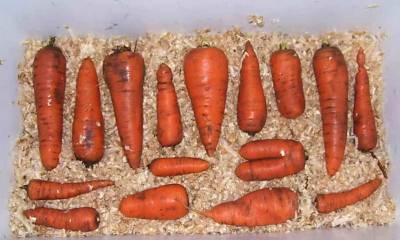 Washed carrots can be stored in the cellar:
Washed carrots can be stored in the cellar:
- in nets, stacked or suspended from the ceiling;
- in plastic bags with perforation;
- in wooden or plastic boxes, sprinkled with sawdust or clean straw.
Storage conditions: air temperature +2 +4 degrees, humidity 70-75%.
Clean root vegetables can be put in the refrigerator, cold pantry, or kept on the balcony (with appropriate insulation).
Is it possible and how to preserve unwashed?
Root crops carrying soil residues are stored in piles on the site or in piles in the cellar. The dried carrots are laid out on a sand cushion (15 cm layer) so that the vegetables do not come into contact with each other.
The pile, which is located on the street, is additionally insulated with a layer of dry earth, up to 50 cm thick. The height of the collar should not exceed 1.5 m, the length is arbitrary.
Small batches of vegetables that are stored in a pantry, underground or balcony cellars are wrapped in newspapers or wrapping paper. If any root vegetable begins to rot, the packaging will not allow the infection to spread to neighboring vegetables. Carrots wrapped in newspaper are placed in boxes in batches of up to 5-20 kg.
Tips and prohibitions
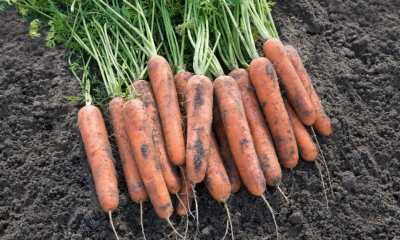 Root crops growing on clay and chernozem soils require mandatory washing.. Sandy soil easily falls off carrots after drying, leaving the root crop clean.
Root crops growing on clay and chernozem soils require mandatory washing.. Sandy soil easily falls off carrots after drying, leaving the root crop clean.
Do not expose the crop to excess moisture if you can do without washing. To remove the root crop from the ground clean, the bed is thoroughly filled with sand before sowing.
Some gardeners use the old-fashioned method of storing unwashed carrots. Prepare a clay mash from pure clay, water and chalk. Each root vegetable is immersed in the mixture entirely (it should be as thick as sour cream).
After drying, the clay hardens, forming a dense shell. It preserves the vegetable, preventing rotting.
When vegetables that have suffered from diseases are stored for storage, they must be additionally freed from infection. After the main wash, the carrots are immersed in a solution of Fitosporin or potassium permanganate (pink solution). Leave it for about 30 minutes, then put it away to dry.
Useful information about ways to store carrots can be found in this section.
Conclusion
It is up to the gardener to decide whether to spend effort on washing the carrots after digging or not. If the harvest volume is large, it is not advisable to waste time washing vegetables by hand..
The percentage of yield loss when storing unwashed carrots does not compensate for the time costs. It makes sense for owners of small gardens to take care of the safety of each root crop grown.

